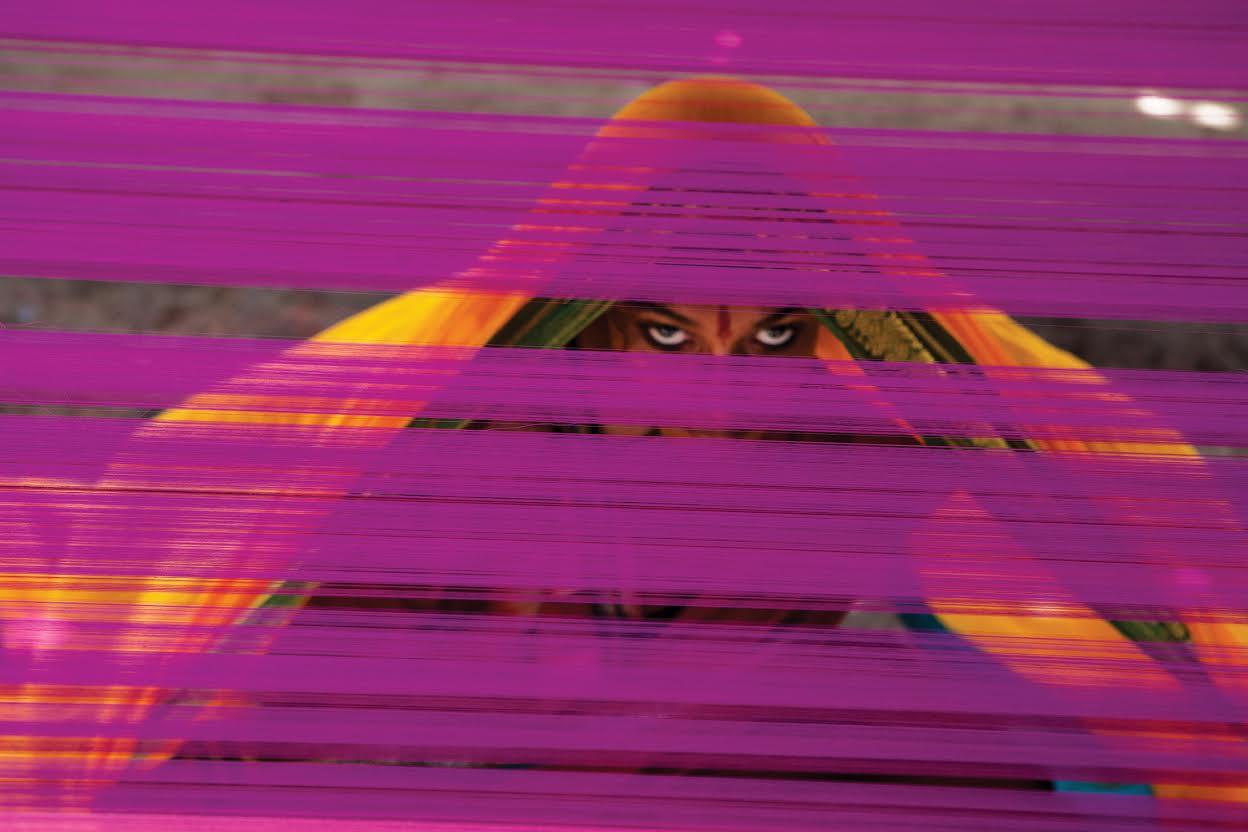A photographer focuses her lens on Indian dancers and their costumes
Kuchipudi dancer Amani wearing a Ponduru khadi sari sits underneath warp threads with a yellow dupatta pulled taut over her head. This young dancer lives and trains at a local dance academy in Kuchipudi village.
In 2008, photographer Briana Blasko decided to pack her bags and move to south India. She had a plan: to travel throughout India and photograph dancers and their costumes.
The result is a book called “Dance of the Weave,” filled with stunning images of dancers and textiles.
As much as accessories and makeup are important in a dancer's look, Blasko says, most of the time, it's the fabric that produces the biggest transformation. "The fabric really helps create a character or transform that regular person into a god or a goddess," she says.
One of the most memorable moments for Blasko was when she visited one of the very few remaining families in India who make the color indigo.
The production of the color, which comes from a bushy plant, takes two days. Blasko says the plant is harvested, put into a big pool of water and soaked overnight.
The next morning, the plant is pulled from the pool and men climb inside the pools.
"They do this kicking movement, it's like a dance," she says. "[It's part of] the oxidation process … It's one of the most fascinating things to see — the making of a color."
Blasko describes the different textiles in different parts of India. In the south, for example, she says you can find a beautiful fabric made from silk or cotton. "There's often a temple on the edge of the textile or different birds or different stories from the mythology."
In Kerala state in southern India, you can find a simple white cotton and gold fabric called "mundu". It's usually worn around the waist by men.
In the northeast, there is a beautiful golden fabric called muga silk. Monks who practice a traditional dance called Sattriya tend to wear it. “It’s a very prized fabric for them,” Blasko says.
In this era of cheap, synthetic fabrics, there are those in India who still take the time and energy to create organic textiles and colors.
Blasko visited workshops where women wove fabrics on a hand loom. They spent days making and dying the fabrics.
“I fell in love with hand loom weaving in my early visits to India and that was something I wanted to capture. But the reality in many of the villages was that, although they are beautiful, not that many people are wearing them," she says. The handmade fabrics are expensive.
Her book, Blasko says, proved to be “a deep exploration of [the dancers] interactions with their costumes, as an extension of their moving bodies and the stories they tell through dance."
We want to hear your feedback so we can keep improving our website, theworld.org. Please fill out this quick survey and let us know your thoughts (your answers will be anonymous). Thanks for your time!
